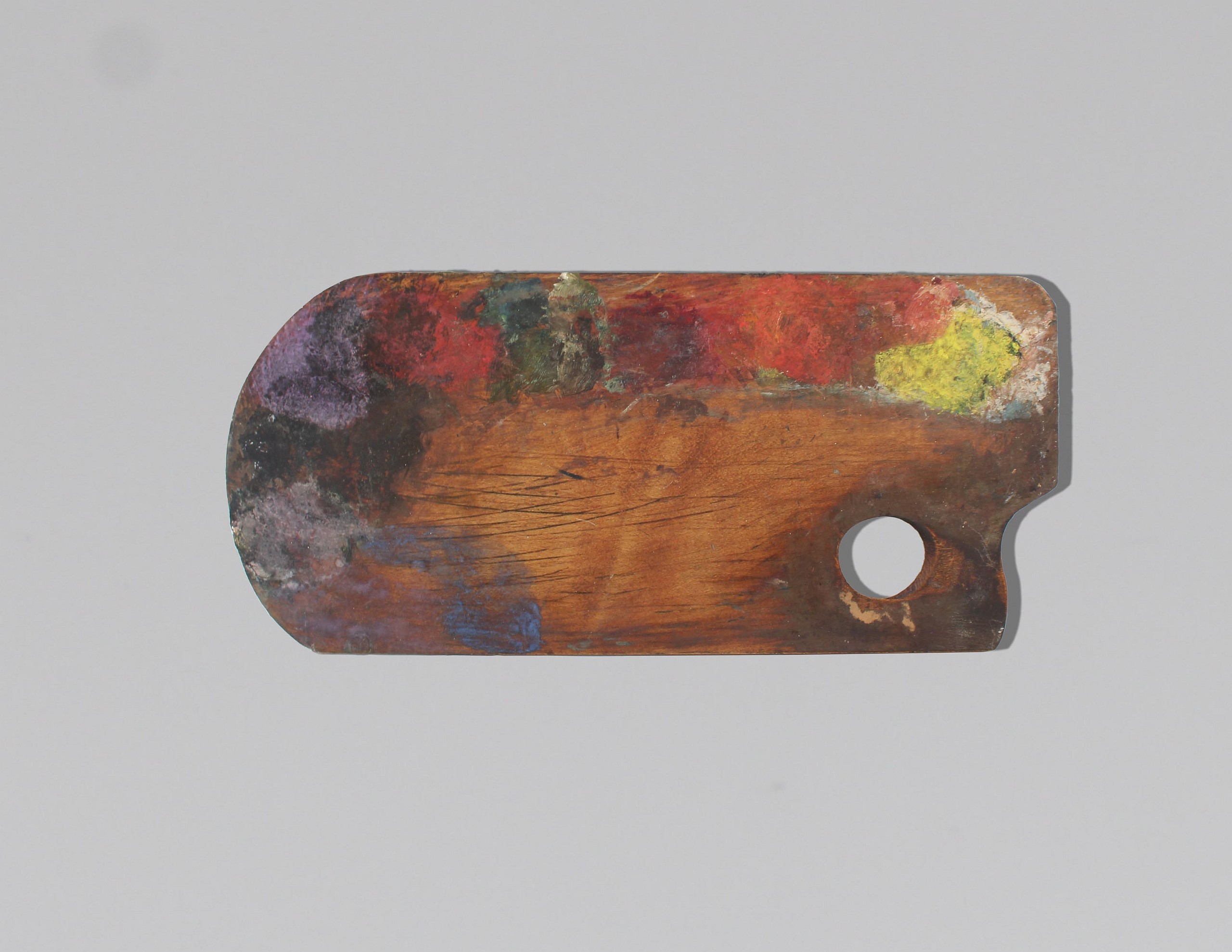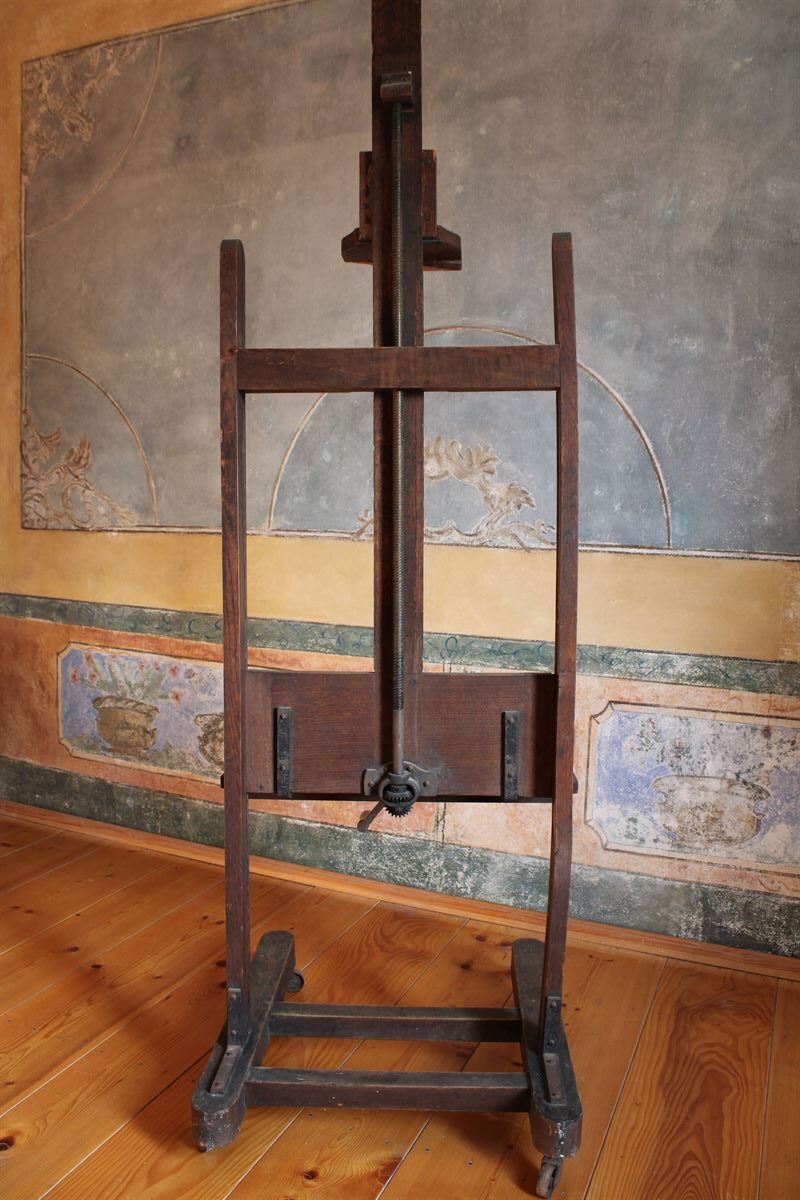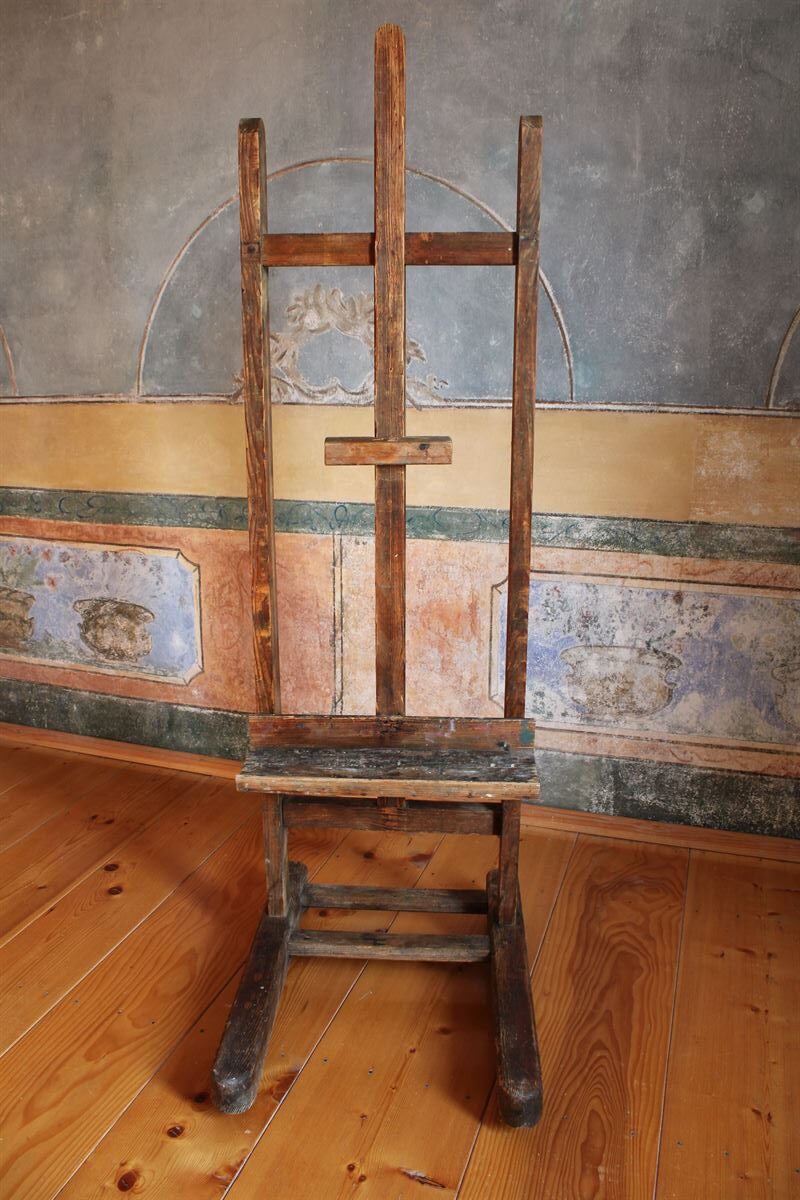tablica
| Inventory numbers: KB-1205, KB-1206, KB-170, KB-412, KB-413, KB-414, KB-415 |
| Material: wood, metal, porcelain |
| Dimensions: KB-1205 (233 x 68 x 74 cm), KB-1206 (168.5 x 52 x 69.5 cm), KB-170 (25 x 34.5 cm), KB-412 (14.7 x 33.5 cm), KB-413 (23.5 x 34 cm), KB-414 (15.5 x 23 cm), KB-415 (21 x 25 cm) |
| Dating: late 19th c. |
| Origin: France |

Središnji sadržaj

The use of the easel, or painting stand, dates back to ancient times, as indicated by depictions in Egyptian reliefs.
Throughout history, painters have always used some form of support for their artwork. However, the studio easels, similar to those used today, originated in the 19th century. They were massive pieces of furniture that could be moved with wheels, serving not only a utilitarian function but also playing a role, along with the overall decoration and scenography of the studio, in impressing potential portrait clients. For oil paintings, the canvas had to be positioned almost vertically to reduce the reflection of wet paint and minimise the possibility of dust contamination while the paint dried. Two such easels, one considerably larger and heavier, are found in the bequest of Vlaho Bukovac. They belong to the standard H-models of easel stands. On the central bar, there is a movable holder that adjusts to the canvas’s height.
The larger easel (KB-1205) has a height-adjusting mechanism that operates on a cog-wheel principle. Along the central bar, there is a metal rod with a thread and a cog-wheel. In front, on the wooden extension where the painting is placed, there is a handle used to raise or lower this holder, anchored to the wooden structure.
The height of the smaller easel (KB-1206) is adjusted using a handle located beneath the wooden extension. Both have wheels for easier mobility. Certain photographs confirm that Bukovac also had a collapsible easel for painting outdoors, but unfortunately, its fate is unknown.
Additionally, the Collection of Furniture and Household Objects contains several of Bukovac’s wooden palettes with remnants of paint, as well as one porcelain palette. They come in different shapes, with a hole for the thumb, and it is possible that he bought them together with other painting supplies, in the renowned store Lefranc & Cie.





